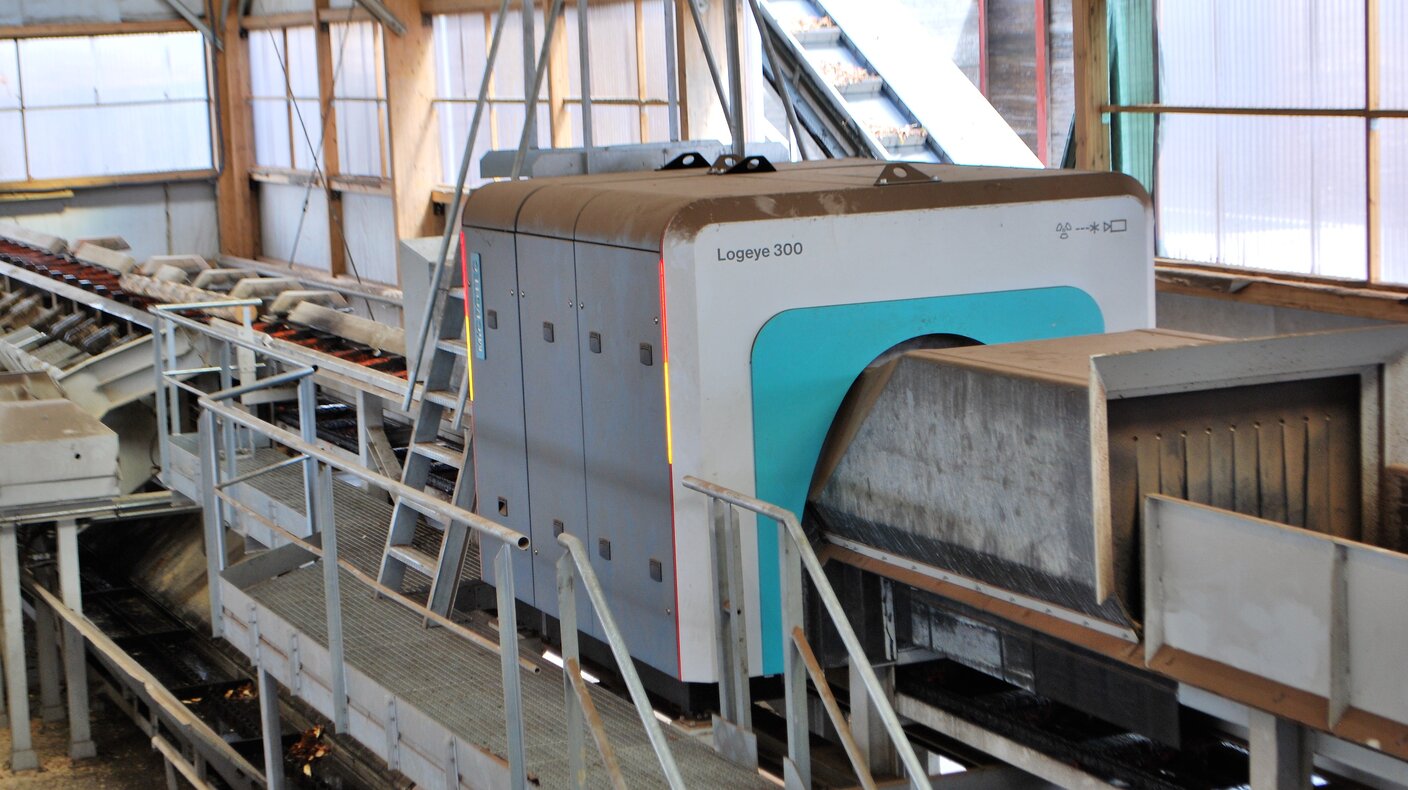Seeking for quality as early as possible

After the launch of an automated woodworking line with a sorter for 100 boxes, Polish company SYLVA in Wiele near Kościerzyna (Pomorskie Voivodeship) sought a more effective use of raw material through a technologically advanced system for scanning wood... X-rays.
Therefore, at the end of 2019, the company installed a MiCROTEC Logeye 300 prototype scanner, which can determine the geometric, optical, and structural features of wood and recognizes internal defects in raw materials. The result are color photos of the cross-sections of each log, viewed on monitors by the line operator who is a qualified sorter. Within seconds, he makes the decision to classify a log into a specific wood class.
The human factor
“The problem is that without proper support with relevant tools, people are the weakest link in the interpretation of color images from precise scanning,” says Piotr Taube, technical director of Sylva. After more than a year of operating the Logeye 300 scanner, you can see its benefits for the company, but they are still unsatisfactory since the sawmill, where sorted raw material is processed, lacks a suitable device that can grade boards according to clearly-defined criteria. These are not the problems of just this sawmill that implements modern wood scanning devices. Sylva was aware of this before installing the prototype scanner from MiCROTEC, as its purchase was the next stage of a project inaugurated three years ago. “The scanner was installed and the whole idea of scanning had been developed in cooperation with Prof. Kazimierz Orłowski of the Gdańsk University of Technology and his team”, explains the technical director. MiCROTEC carried out all the mechanical work, but the team of Prof. Kazimierz Orłowski did the scientific and conceptual framework.
Scanner with artificial intelligence
As a result of research and work on the scanner images, it turned out that the company should urgently purchase the Goldeneye 901 scanner from MiCROTEC, a state-of-the-art device with artificial intelligence, which will work with the existing log scanner already installed at the sawmill. Because at the moment it looks like this: At Sylva a batch of logs are sorted according to the parameters set on the scanner. The logs are then taken to the sawmill to be cut into boards, when it turns out that the individual who visually checks the boards does it according to generally accepted criteria, but with a lot of interpretative freedom. One sorter may like a particular board, while the other does not. This causes chaos in production. That is why Sylva wants to purchase another scanner that will evaluate boards resorting to rigid, objective, and unchanging criteria. The Goldeneye 901, which is installed in the sawmill in August, is to meet the expectations as to an unambiguous evaluation of sawn timber. It should be clear that a particular shadow indicates a knot that is too large for the already mentioned, potential use of timber as wainscot boards.
The Logeye 300 X-ray scanner detects changes in the cross-section of the wood's density caused by internal defects, so e.g. an algorithm could be introduced that can analyze wood density to create an image of its cross-section and determine, for example, that it is a very hard wood without significant internal defects, usable for making construction sawn timber. Of course the scanner can also perfectly detect nails, unexploded ordnances, or other foreign objects in wood. It also detects all imperfections, including cracks, rot, and virtually any defect larger than 2 mm.
Getting to know the inside of the log and boards is becoming increasingly important
“But at the later stage of converting the logs into boards, the process is even more complicated, requiring the adaptation of the manufacturing process in each of Sylva's departments,” points out the technical director. The desire to know the inside of the wood before sawing is not a result of mere curiosity – it has to do with the need to process the raw material as effectively as possible. The pioneering nature of this work makes sense, especially considering the current increases in wood prices. A possible solution is a mechanical assessment of the quality of each board using a camera and laser beams that penetrate the wood structure and show how the fibers are twisted, as well as the potential mechanical strength of a specific wood. The visual examination of the timber quality does not allow it, as it is very imperfect. Therefore, they want to assess the wood quality by machine by installing the Goldeneye 901 scanner already mentioned in the sawmill directly at the entrance of the sawn timber sorter, where logs are already cut.
In the next few years, Sylva plans to establish a more modern sawmill in Wiele, in which the wood scanning will be done using a CT scanner that is already in operation in the Piveteaubois plant. The machine works similarly to a CT scanner used in hospital treatment. This is a future-oriented technology that has proven itself well in the wood industry.
The whole article in Polish language can be found in the e-edition of GPD VI 2021.







